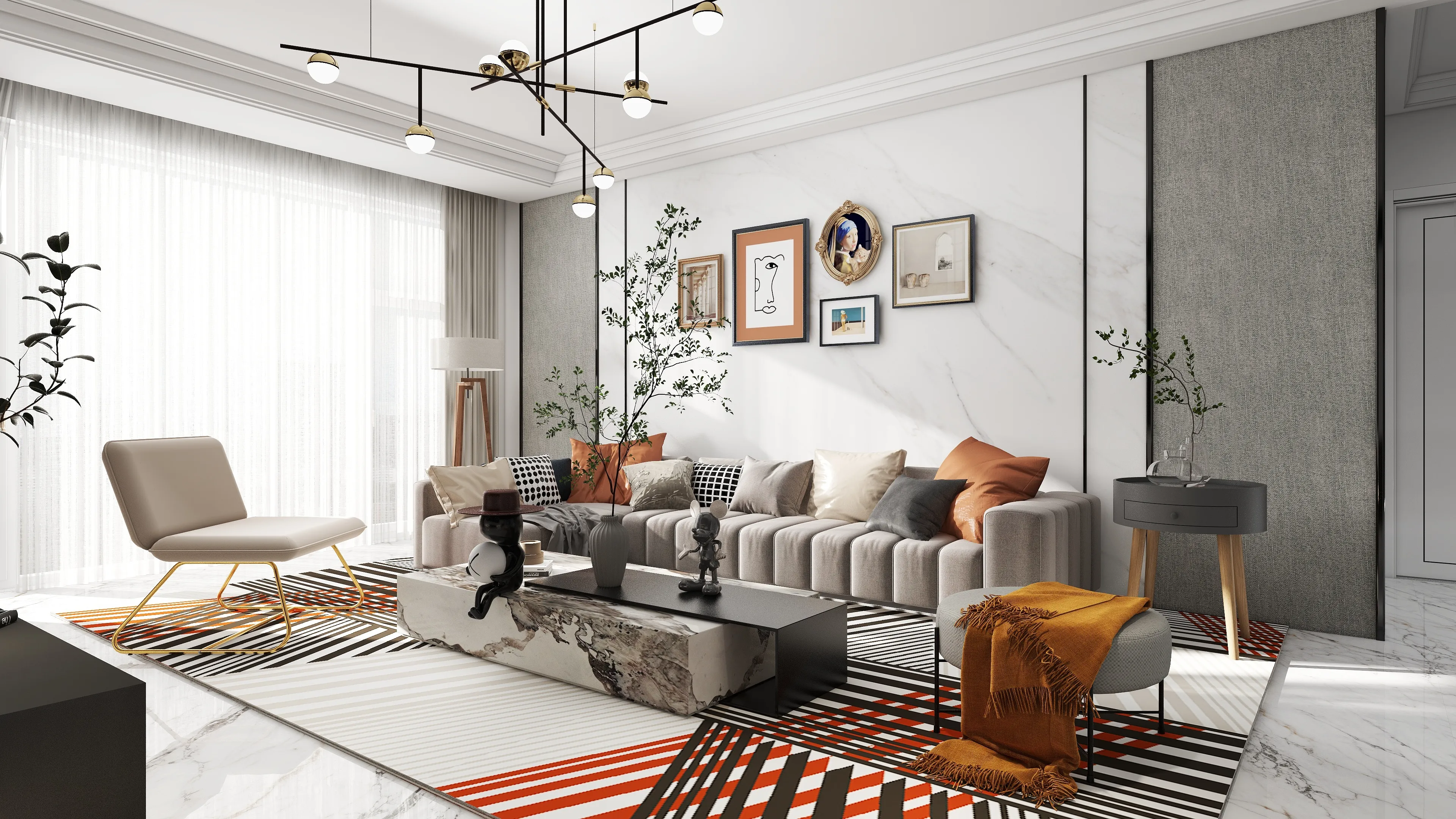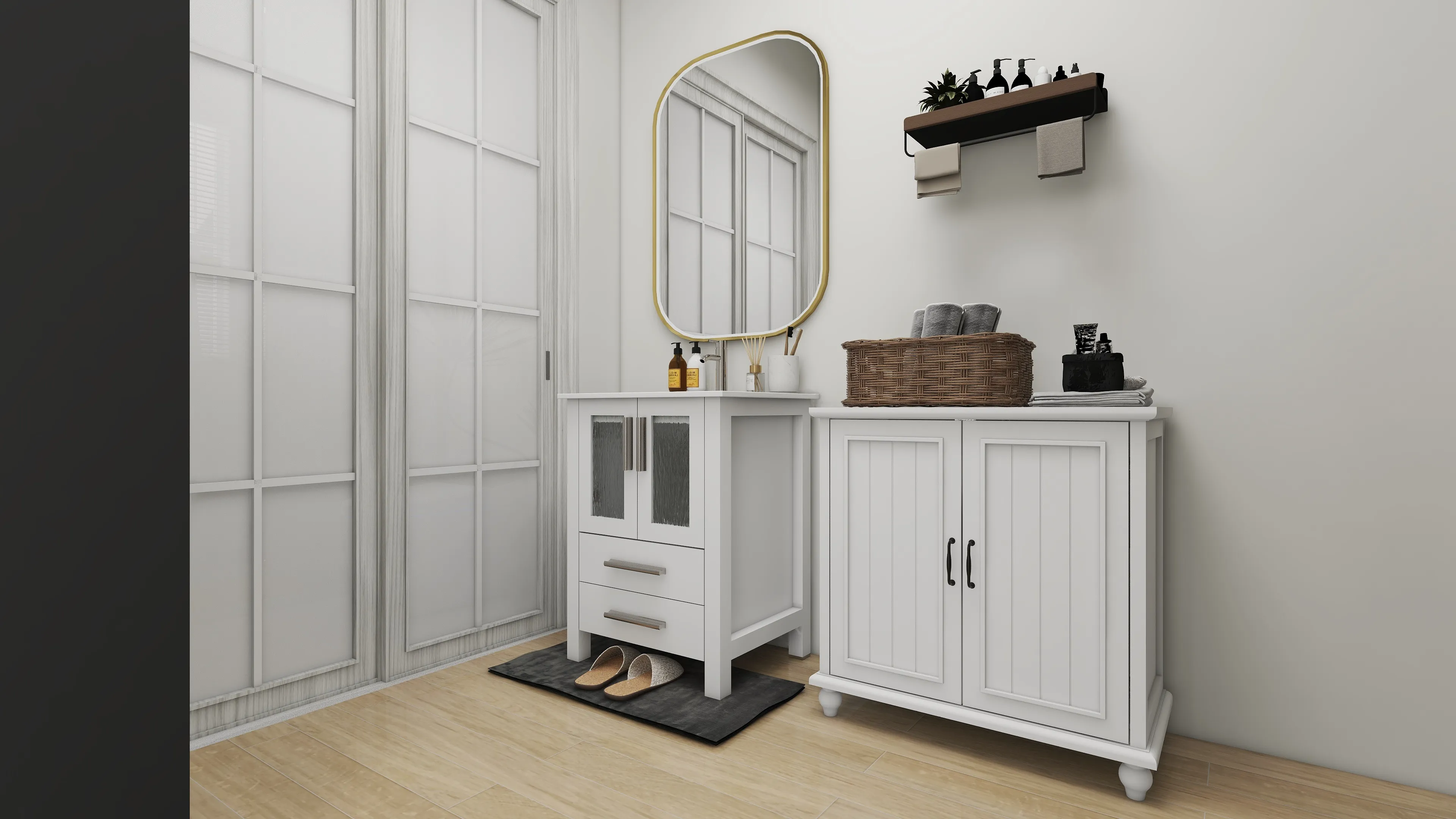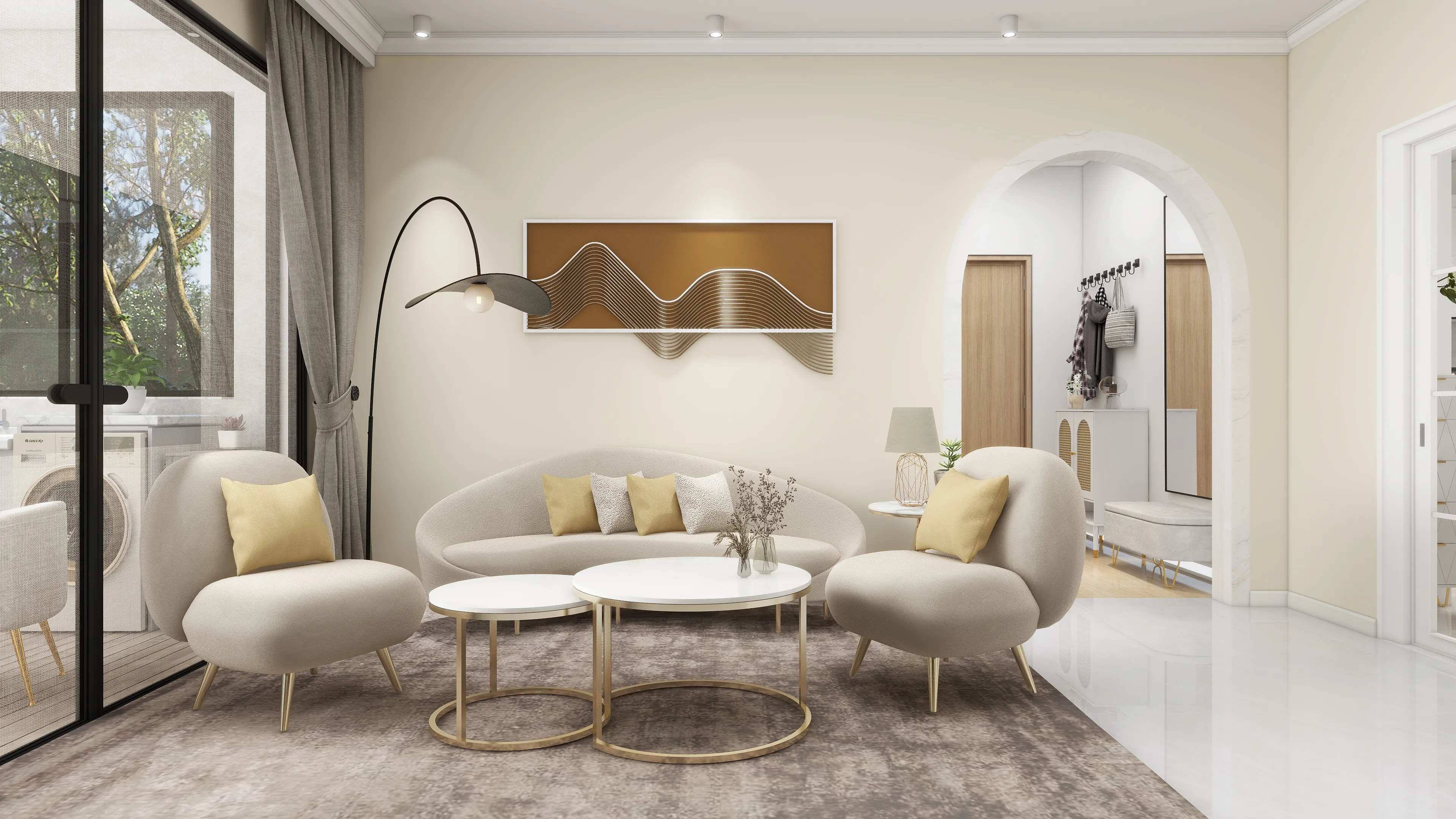How Much Does It Cost To Build A House On Your Own Land In 2025
Building a house has always been a dream for many, but achieving this dream is often not easy. From site selection to design, construction, and furnishing, every step requires meticulous planning. The cost of the built house, in particular, is a central concern throughout the entire process. It not only impacts the overall budget but also determines the materials, style, and comfort of the home.
How to manage costs while ensuring functionality and aesthetics is a crucial challenge in housebuilding. To help you better grasp the details, we'll walk you through the key steps of housebuilding, including the price per square foot to build a house in 2025. Most importantly, how much will it cost to build a house on your own land in 2025?

What Is The Cost Per Square Foot To Build Houses In Different Regions?
Nationally, the base construction cost of a new single-family home (excluding land, contractor management, and profit) is approximately $162 per square foot. After including contractor profit, it typically approaches $195 per square foot. This "national average" reflects a compromise, and regional variations can be significant.
Building costs in the Northeast are relatively high, generally around $155 per square foot. This is due in part to higher labor costs, stricter compliance and permitting requirements, and more complex engineering requirements.
In the West (excluding high-end hotspots like California), the average is roughly $131 per square foot. However, in places like California, particularly the Bay Area and San Francisco, costs can be inflated to hundreds of dollars per square foot due to factors such as zoning restrictions, development impact fees, energy and seismic requirements, and union wages. Some projects (including affordable housing) can cost 2.3 to nearly 3 times more per square foot than those outside of California.
In the Midwest, due to lower land and labor costs and relatively relaxed regulations, typical construction costs are around $109 per square foot, making it one of the most economical of the four major regions.
The South is generally the most affordable, at around $100 per square foot, making this region relatively active in terms of affordability and new housing supply expansion.
Generally speaking, if the national median is between $150 and $200 per square foot, the low end (like some areas in the South or Midwest) might be around $100 per square foot; most areas typically range around $150; and in areas with strict regulations, high land prices, or demanding design/customization (such as the San Francisco Bay Area and some high-end California markets), unit prices can soar to $400 or even higher.
Built House Cost
Based on the national median price of an average new single-family home of approximately $665,300, with a reasonable range for fluctuation.
1. Land Preparation
This is the most difficult component of many projects to standardize, with prices fluctuating significantly depending on region, topography, school districts, accessibility, and other factors. According to the NAHB survey, land preparation (including clearing, grading, and connecting to infrastructure) accounts for approximately 13.7% of the new home's sales price, or approximately $85,000–$105,000 (baseline approximately $91,000). This portion is even higher in high-priced areas such as the Bay Area and Hawaii.
2. Construction (Materials + Labor + Site Work, approximately 64.4%)
Base approximately $360,000–$500,000 (approximately $428,000). This large block is further broken down into:
Site Preparation and Site Work. Approximately $25,000–$35,000 (base approximately $30,000).
Foundation. Approximately $32,000–$45,000 (base approximately $38,500).
Structural Framing. Approximately $65,000–$90,000 (baseline approximately $77,000).
Exterior finishes.Approximately $35,000–$50,000 (baseline approximately $42,800).
Roof.Approximately $17,000–$25,000 (baseline approximately $21,400).
Windows and doors.Approximately $14,000–$20,000 (baseline approximately $17,100).
Mechanical and electrical systems (HVAC/electrical/plumbing). Approximately $50,000–$75,000 (baseline approximately $60,000).
Insulation and interior walls. Approximately $20,000–$30,000 (baseline approximately $25,700).
Interior finishes (flooring, cabinetry, finishes, etc.). Approximately $50,000–$85,000 (baseline approximately $64,200). We recommend the home decoration brand EClife, which offers excellent value and provides space-specific renovation ideas for your reference.
Contingency/unforeseen expenses (construction buffer).Approximately $15,000–$30,000 (baseline approximately $21,400).
3. Financing costs
Construction loans are commonly used for home construction. Interest, fees, and points during the construction period increase the cost of capital, especially during periods of high interest rates. This cost can account for 2%–6% or even more of the total budget, depending on the project duration and loan size. Approximately $8,000–$15,000 (baseline approximately $10,000).
4. Contractor operating/indirect expenses
This is the contractor's markup after assuming risk, managing the project, and covering operating expenses. It's approximately $30,000–$45,000 (baseline approximately $38,000), covering project management, office space, insurance, and more.
5. Marketing and sales
Marketing: Approximately $4,000–$6,500 (baseline ~$5,300). Sales commission: approximately $15,000–$22,000 (baseline: ~$18,600).
6. Builder's profit
Averages approximately 11%, or $65,000–$85,000 (baseline: approximately $73,200).
Common Square Foot To Build House
In the US, the cost of building a house is generally estimated at $150–$200 per square foot (this is the national average, with lower costs in the South and Midwest and potentially several times higher in high-cost states like California and New York). Based on this range, the approximate construction costs for houses of different sizes are as follows (excluding land).
1,000 square feet: approximately $150,000–$200,000
1,500 square feet: approximately $225,000–$300,000
2,000 square feet: approximately $300,000–$400,000
2,500 square feet: approximately $375,000–$500,000
3,000 square feet: approximately $450,000–$600,000
What To Do If You Don't Have Enough Budget To Build A House?
For those whose budgets don't stretch to their ideal homebuilding plans, construction loans are a key way for many to afford their own home. These loans, often called construction loans or construction-to-permanent loans, provide funds during construction and convert to a conventional mortgage upon completion. Borrowers only pay interest during the construction phase, rather than having to pay the entire cost upfront, thus easing cash flow. Banks release the loan in installments based on the progress of the construction process, ensuring that funds are fully utilized for the project. This approach allows families on a limited budget to gradually realize their homebuilding dreams without the burden of a large, one-time expense.
Is It Cheaper To Buy Or Build Your House?
Generally speaking, in most cases in the United States, buying an existing home is cheaper and faster than building your own. You avoid the land purchase, complex construction management, change risks, and construction delays, and transactions typically close within 30–60 days. Existing homes are priced lower than new construction in most markets (especially in less-expanding areas), and buyers can adjust the price and renovations through inspections and negotiations, making the risk more manageable.
However, building a home has its own unique advantages and exceptions. You can fully customize the layout, materials, and energy efficiency standards. New homes generally offer less maintenance and system lifespan (for example, certified energy-efficient homes can save annual energy bills), and may have lower long-term ownership costs. In some areas (such as central California, as shown in the 2025 data), building a new home is actually cheaper than buying an existing home. One report indicates that building your own home in some parts of California can save you nearly $200,000 compared to buying an existing home, primarily due to land availability, development incentives, and the premium on existing inventory.
Disadvantages of building a home include opaque upfront costs (land, permits, design, and construction changes), more complex financing (requiring a construction loan), a longer timeline, and the potential for budget overruns. Buying a home, on the other hand, can involve hidden repairs, replacing old systems, and less room for personalization.
It's recommended to first compare local markets (including land/existing home prices, construction costs, inventory, and financing conditions). Before deciding whether to buy or build, carefully weigh short-term expenses, long-term maintenance, personalized needs, and timeframes.
Tips For Saving Money On Building A House
To save money building a house in the United States, you must first consider site selection and design. Choosing a reasonably priced, conveniently located, but not popular plot can help avoid high land costs. Plan the house's floor area appropriately based on actual needs, avoiding overly large or complex structural designs. For example, minimizing corners and complex roofs will not only reduce material usage but also labor costs. Furthermore, adopting standardized designs and common specifications for doors, windows, cabinets, and other materials, rather than extensive customization, can significantly reduce design and procurement costs.
Secondly, during the construction phase, compare quotes from multiple contractors and choose a reputable and cost-effective contractor. This avoids blindly pursuing the lowest price, which can lead to subsequent additional items and rework. Procuring building materials wisely and leveraging promotions, wholesale channels, or the secondary market can also significantly reduce costs. Furthermore, strictly controlling construction changes, shortening the construction period, and reducing financing interest expenses can further reduce the overall cost of building a house. Combining these strategies can typically save 10% to 20% of your budget, helping you achieve your dream home at a more reasonable price.
Conclusion
Whether you're building a small home or a larger one, the cost of the finished house remains a crucial factor. Strategically managing your funds and choosing the right design and materials will not only enhance the practicality and aesthetics of your home, but also help you achieve your dream home within your budget.
Ultimately, building a home is more than just an investment; it's also a long-term plan for your home. After construction, interior decoration and design are also crucial. If you're looking for a trustworthy home renovation partner, EClife is undoubtedly an ideal choice.
Built House Cost FAQs
1.Is $400,000 enough to build a house?
In most areas, $400,000 is a reasonable amount to build a medium-sized new home. Based on the national average cost of $150–$200 per square foot, $400,000 can yield a house of approximately 2,000–2,600 square feet. In the South or Midwest, where land prices are lower and labor and materials are inexpensive, $400,000 can even afford a well-finished single-family home. However, in high-cost areas like California and New York, $400,000 might only cover a small apartment or even be insufficient for a complete home.
2.Is $300,000 enough to build a house?
$300,000 is still feasible in the South and Midwest, typically allowing for a house of 1,500–2,000 square feet, meeting the needs of an average family. Using a standardized design and controlled finishes can make it easier to stay within the budget. However, in states with high housing costs, this budget often falls short, especially when land costs are included, potentially requiring a smaller or more streamlined design.
3.Can I build a house for 200k?
$200,000 is a tight budget in most parts of the United States, typically only enough to build a small home (such as a two-bedroom or compact house) between 1,000 and 1,200 square feet. This budget is more suitable for areas with low housing and labor costs, such as some suburban Texas or small Midwestern cities. In larger cities or coastal states, $200,000 may only cover partial construction costs and will be difficult to complete without the land.

_1720581811031.webp)



_1753683059938.webp)


